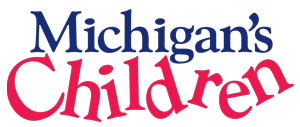Cross-Sector Coordination Essential in the First Eight Years of Life
Today, the Annie E. Casey Foundation released a Kids Count Policy Report titled The First Eight Years: Giving Kids a Foundation for Lifetime Success. This report takes a close look at how young children are faring and makes some public policy recommendations that could improve their first eight years of life. As we’ve said many times at Michigan’s Children, we know that our next workforce will be the most diverse yet, so improving educational outcomes for all children – particularly children of color and children from low-income communities – is critical to Michigan’s future economic vitality. This means setting the right foundation in those first critical years and continuing to build upon that solid foundation in the K-12 setting to ensure lifelong success.
We know that by the time children reach third grade, they must be successful readers in order to continue to succeed in school. As they say, until third grade, children are learning to read; and beginning in fourth grade, they are reading to learn, with proficiency in every other subject – math, science, social studies, art – dependent on reading ability. We know that too many Michigan children fail to achieve this critical benchmark indicator and children of color and children from low-income families struggle even more so. Unfortunately, a focus simply at reading improvement at the school building and within the school day once children enter kindergarten is not sufficient. Reading proficiently by the third grade is a symptom of system successes and failures up to that point in the life of a child. Only when we look at this system holistically will we be able to ensure more children can successfully achieve this crucial benchmark.
As the Kids Count policy report shows, our nation – including Michigan – must do better when it comes to child well-being in the first eight years of life as this will impact third grade reading outcomes as well as future life success. As today’s report lays out, an effective system serving children from birth through age eight would:
- support parents as they care for their children;
- improve access to quality early care and education, health care, and other services; and
- ensure that care is comprehensive and coordinated for all children from birth through age 8.
Keeping a focused goal on reading proficiency, the Kids Count report reiterates the myth that classroom learning is isolated from other aspects of child development and that in fact, cross-sector collaboration that reaches outside the classroom doors is necessary to ensure that Michigan’s most challenged children can read proficiently. These early years of a child’s life provide a perfect opportunity to illustrate how health, human services, workforce, and other sectors can work closely with the education community to foster children’s success. Public policies can support and incentivize cross-sector and inter-agency coordination.
One example already in existence is Early On, which identifies infants and toddlers with developmental delays and works with families and their young children to provide appropriate interventions. Early On oversight lies within the Michigan Department of Education but works closely with health and human services to ensure that families can support their young children. Early On providers teach parents how to foster and support their child’s growth and development, connects children to appropriate interventions such as speech or physical therapy, and can connect families to other needed services as they relate to socio-emotional services, home visiting needs, and the like. Early identification of developmental delays can ensure that appropriate interventions can be administered and that children can get back on track to succeed in school. While Early On provides a critical service for Michigan’s most challenged infants, toddlers, and their families, this program is woefully underfunded and too many families can’t access the wraparound services their children need.
Additionally, there are innovative practices happening around the state and nation that facilitate connections between schools and other public and private service providers. Communities in Schools is a well-researched national model currently utilized in several Michigan communities. Another relatively newer program that targets children in elementary schools is Pathways to Potential, which was modeled after the Kent School Services Network – a well-established county-based strategy that has demonstrated student outcomes. These programs formally coordinate needed family supports through the Department of Human Services – supports like food assistance, child care assistance, and housing assistance – in a school setting, which is significantly less intimidating than a DHS office. Pathways to Potential Success Coaches also integrate child and family health needs, parental needs, and other critical pieces that support struggling children with the ultimate goal focused on school attendance. The work remaining is to ensure that Pathways to Potential results in the outcomes that we want and that it can be replicated in communities across our state while catering to individual community needs.
These types of holistic programs focus on the individual child’s success while also providing the needed services to ensure that other challenging factors in a child’s life can be addressed. We know that these types of services can ensure that more Michigan young children from particularly challenging circumstances can reach the third grade reading benchmark. Thus, more coordinated programs and services are needed to ensure that Michigan can better support our young children from birth through age eight.
-Mina Hong
See the Michigan League for Public Policy’s blog on the Kids Count policy report and their corresponding news release.
